——–Click on the surface treatment that most resembles your find———–
Pottery is an amazing artifact. There are many types, all with different designs or no design at all. Designs come from the potter’s imagination or his beliefs. All have different tempers, some of grit or small pebbles, some of Spanish Moss that has burned away, leaving only a trace of its existence. Some types are tempered with sand and some with clay; others with what some would call no temper at all, only to discover that there are small, microscopic sponge spicules that hold it together.
Think about this. Pottery is a lot like people. Each one was fashioned by the Potter’s hand, each uniquely designed from the Potter’s heart. Some were designed for daily use while others were designed for special occasions and celebration. All were tempered, but all have a different temperament. How has the Potter designed you and tempered you? What was His special plan and purpose? We are clay in His hands. Many are like much of the pottery we find, broken and discarded by the world, but there is still hope. Like the pot sherds that were broken and cast aside, then recovered and rounded into gaming stones to become the center of joy in an Indian’s life, our broken lives can be renewed to become the center of joy in the Potter’s heart.
For more detailed information on these and other pottery types within the Southeastern United States, please see our “Publications” page to order Lloyd Schroder’s Field Guide to Southeastern Indian Pottery (Revised & Expanded).
This amazing new book contains over 500 pottery types, each explained in very readable terms with thousands of illustrations and maps of distribution. The volume has earned the acilades of senior archaeologists like David Anderson of the University of Tennessee and well-known Georgia archaeologist Jerald Ledbetter. No serious student of archaeology should be without it.
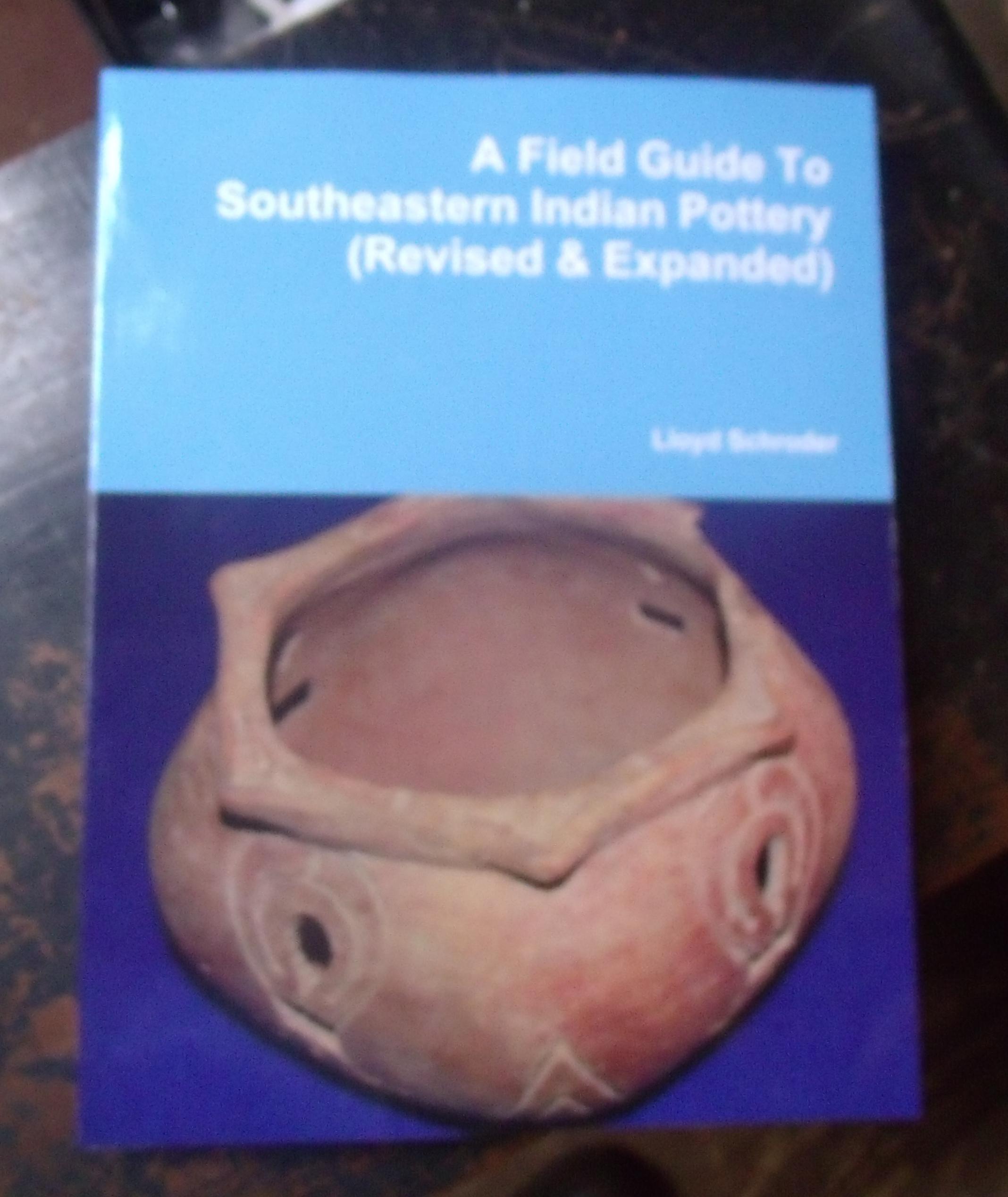
RESEARCH: Jessie Jennings first defined this type in 1941. Caryn Hollingsworth reported on this type in 1991 from the Sheeps Bluff Shelter.
TEMPER: This is tempered with sand, mica and sometimes clay fragments. The exterior color ranges from light gray to tan to red or dark brown. Both interior and exterior surfaces may be burnished.
SURFACE DECORATION: The surface is plain; however, the single sherd recovered at the Sheeps Bluff Shelter site had a red slip or film on the surface. Examples can have a single line of punctations around the exterior of the rim done with a single cord or reed. An appliqué strip may be added around the rim adding thickness.
VESSEL FORMS: Known forms include deep or shallow globular bowls, some with inverted rims. Rims are sharply everted at a 45 to 90 degree angle from the body of the vessel causing the lip to be flattened, otherwise they are rounded or slightly flattened. The bases are either conoidal or flattened-conoidal. One Mississippi site contained a vessel with a flattened handle that had been broken off.
CHRONOLOGY: This type dates to the Middle Woodland period as an expression of the southern Hopewell and Marksville cultures between 300 and 600 A.D.
GEOGRAPHIC DISTRIBUTION: This type is found along the watershed of the upper Tombigbee River in Alabama and across northern Mississippi into western and central Tennessee.
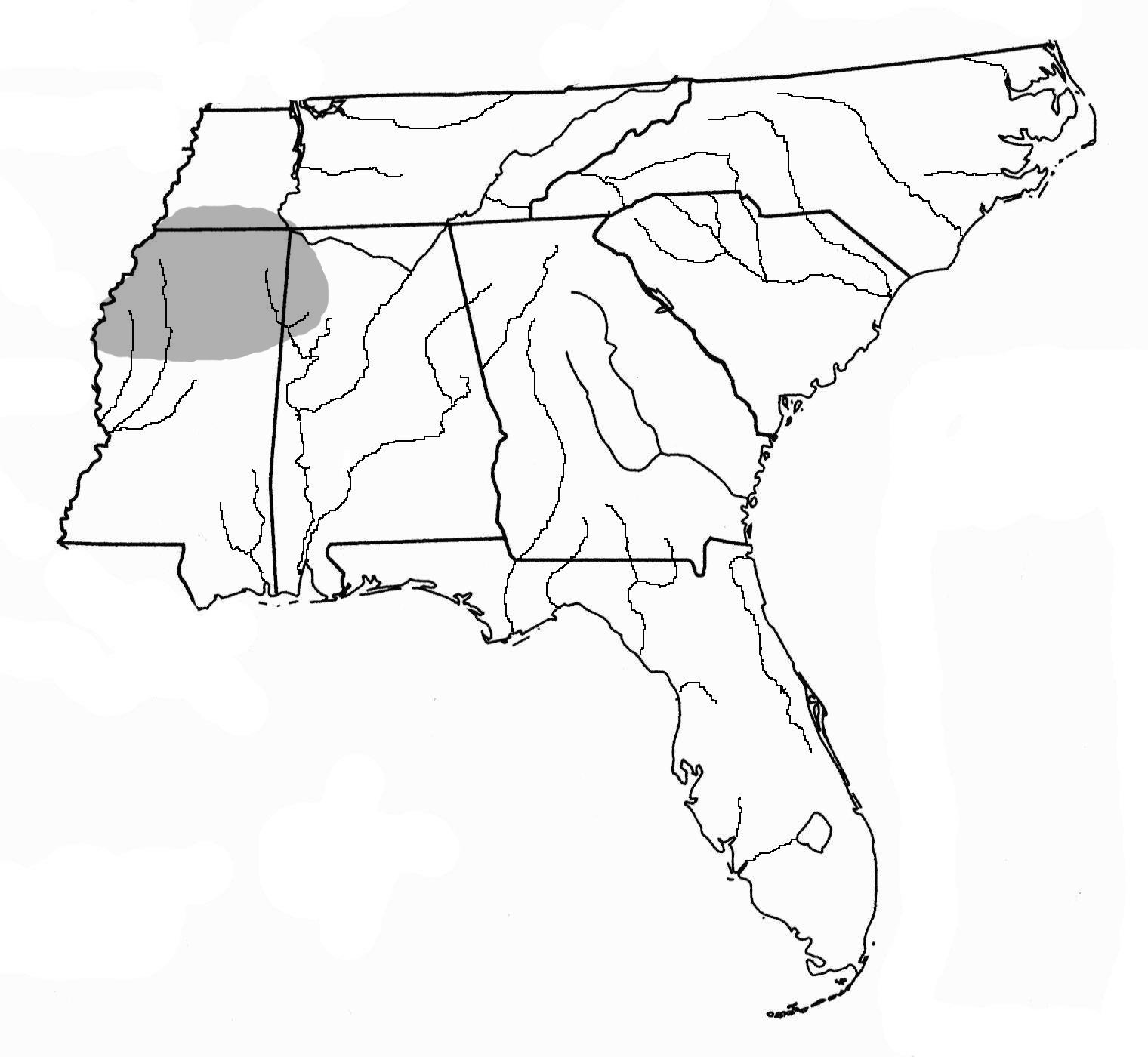
(Left & Right) Mike Stokes Museum of Southeastern Indians, Arkansas
RESEARCH: This type was named by Philip Phillips, James A. Ford and John B. Griffin in 1951 from their survey of archaeological sites across Mississippi.
TEMPER: Clay particles are the more dominant tempering material present in this type. In some paste, both sand and shell may be present. As the content of sand in the paste mixture becomes more abundant, the type becomes classified as Thomas Plain. The texture is coarse, lumpy and contorted in appearance and brakes with a jagged, irregular edge. The surface color is usually gray and drab, but is also known to be pink, buff or red. The core ranges from buff to gray or black. Surfaces tend to be smooth, but may be rough and are chalky. Polished surfaces will have smoothing marks.
SURFACE DECORATION: There is no design or decoration beyond the identifiable rim treatments and appendages. Most rims are simple and unmodified with a rounded or flattened lip (estimated 85%); however some rims have been thickened on the interior or both interior and exterior surface adjacent to the lip, in which case the lip is often beveled or flattened. Rim decoration may be in the form of rim folds formed by paddling, creating a single fold, or creating a second fold on top of the first fold. The folded rims may be rounded, squared, flattened or even triangular in cross section. The depth of the folds can vary widely and may be decorated with nicking, notching, pinching or punctation. A second form of rim treatment is a single incised line on the rim interior, exterior or both at variable distances from the lip, but usually not more than 2 cm. The incised line can vary in width and can, on occasion, have punctations on or beneath it. A third treatment consists of notches (above), pinches or appliqué strips immediately at the lip. A forth treatment consists of reed or straw or fingernail punctations that appear to separate the rim and the shoulder of the vessel and have been known inside the lip. Fifth, a single row of nodes may line the edge of the rim. Finely, perforations may appear 1 to 4cm below the lip that seems to have been drilled after firing.
VESSEL FORM: Vessels are simple, open or incurved bowls and jars. Lips may be rounded, squared, beveled or pinched. Lips on jar forms are often rolled outward while bowls can be beveled. Lips can be notched, nicked, pinched or have one incised line, usually on beveled rims. Bases are rounded or flattened.
CRONOLOGY: This type belongs to the Middle to Late Woodland, Tchula and Baytown periods.
GEOGRAPHIC DISTRIBUTION: The type is known from central and northern Mississippi and perhaps western Tennessee and eastern Arkansas.
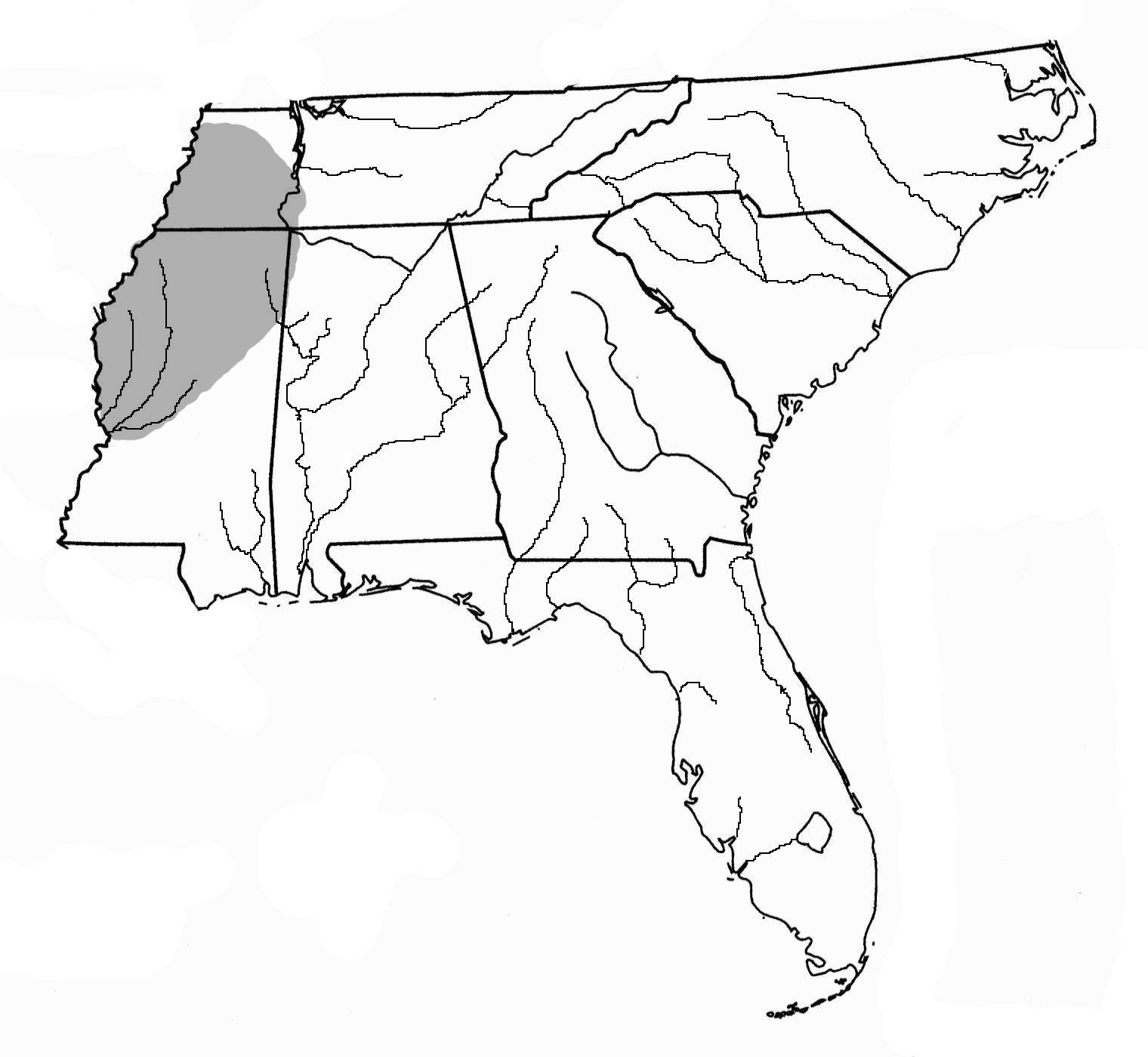
(Left) Private collection, (Right) Ray Kuhn collection, (Bottom) Mike Stokes Museum of Southeastern Indians
RESEARCH: Charles Falkner identified and discussed this type from the Tennessee Valley in 1968.[ii]
TEMPER: Finely ground shell was used as temper in this type. The sherds are soft and tend to break along coil lines. The exterior surface is dark gray or red in color. The surface is smooth to nearly polished and is “soapy” to the touch.
SURFACE DECORATION: The vessel surface is plain and smooth. Separating this type from Mississippian Plain in northern Alabama might be nearly impossible. Some rim decoration occurs in order of frequency: nicked, notched, notched or pinched horizontal rim fillet, pinched, punctated, or single line.
VESSEL FORMS: These vessels often appear as well-made simple, curve-sided bowls; flattened globular or ellipsoidal bottles with short collars and exterior rolled rims and interior bevels; bowls with flattened bottoms and flaring sides; and a wide variety of effigy forms. Appendages are rare, but single loop handles are known.
CHRONOLOGY: The Bell site in Tennessee belongs to the Late Mississippian period.
GEOGRAPHIC DISTRIBUTION: Jones recovered this type in central Alabama at the Davison Creek site and Charles Falkner identified its appearance in the Tennessee Valley. Phillips, Ford and Griffin recovered this type from sites scattered throughout the alluvial valley of Mississippi.
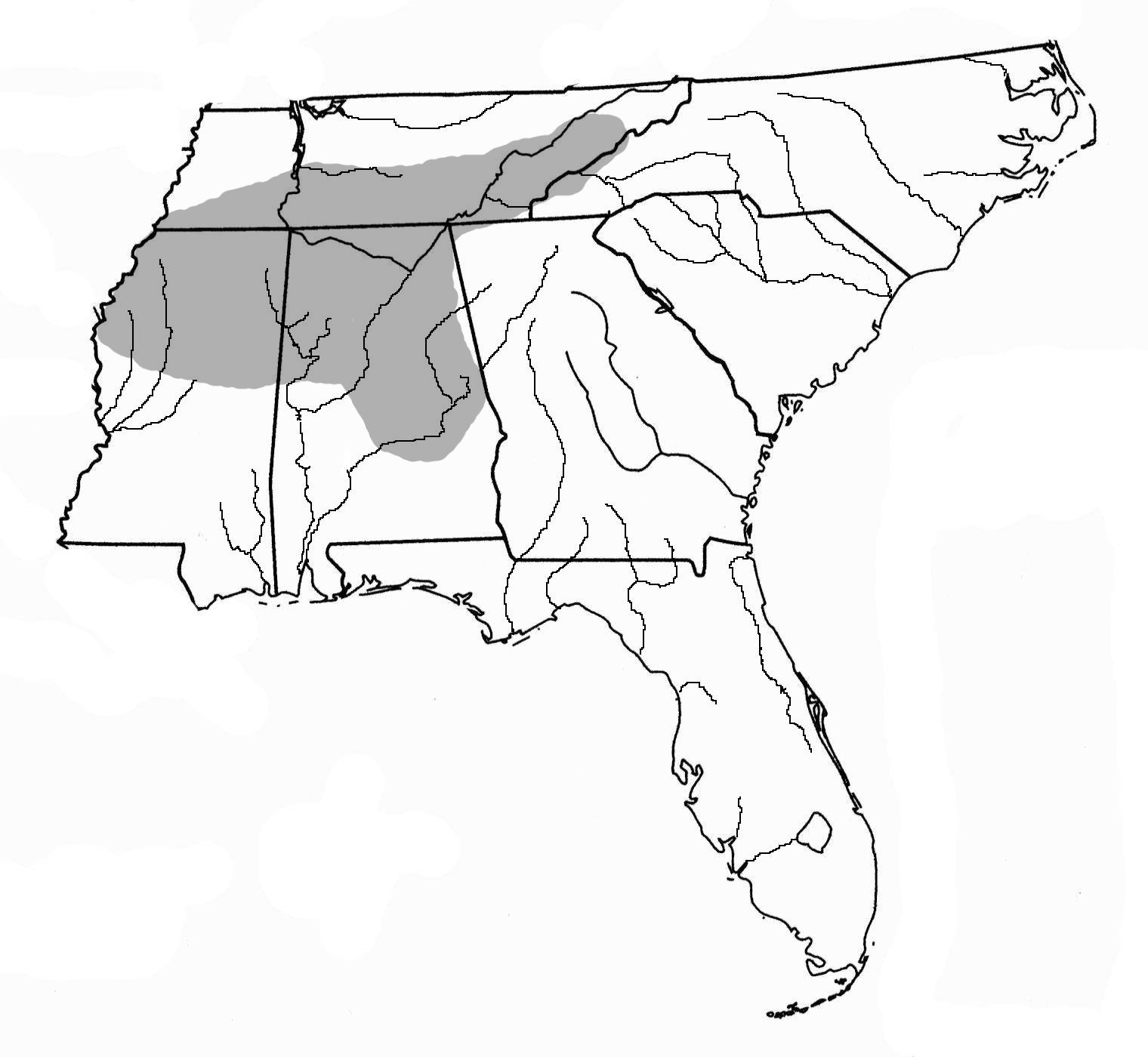
RESEARCH: Bennie Keel defined this defined this as an annular or segmented coil pottery that was built on a conical, disc, or tabular base. Keel’s description of this type was based on his research in sites in western North Carolina.
TEMPER: Connestee Plain pottery was tempered with fine to medium sand with small amounts of crushed quartz occasionally mixed in. The sand often contained mica naturally, but it was not purposefully mixed in. The surface was smooth, but sandy to the touch with a light tan to dark brown exterior, with darker colors being more predominant.
SURFACE DECORATION: The surface is well smoothed, but not polished or burnished. Some incised, plain neck bands (right) may belong to this type.
VESSEL FORM: Vessel forms included conoidal jars, hemispherical bowls and flat-based jars with podal supports. Lips were rounded, flattened or chamfered. These were notched, brushed or punctated. Rims were most often flaring, but were also straight, vertical or incurved.
CHRONOLOGY: A number of radiocarbon dates from various sites have been associated with Connestee pottery that range from Middle to Late Woodland periods. From Russell Cave, Alabama, the type dated to A.D. 740+/- 100. In Tennessee the type dated to A.D. 605+/-90 at Icehouse Bottom. In Georgia at Tunacunnhee it dated to A.D. 150; at Manderville to A.D. 530+/-150. In North Carolina at the Garden Creek Mound No.2 site it dated to A.D. 805+/-85. Keel concluded that Connestee pottery disappeared between A.D 600 to 650.
GEOGRAPHICAL DISTRIBUTION: Connestee pottery has been found in western North Carolina, western South Carolina, eastern Tennessee, and northwestern Georgia, and northeastern Alabama.
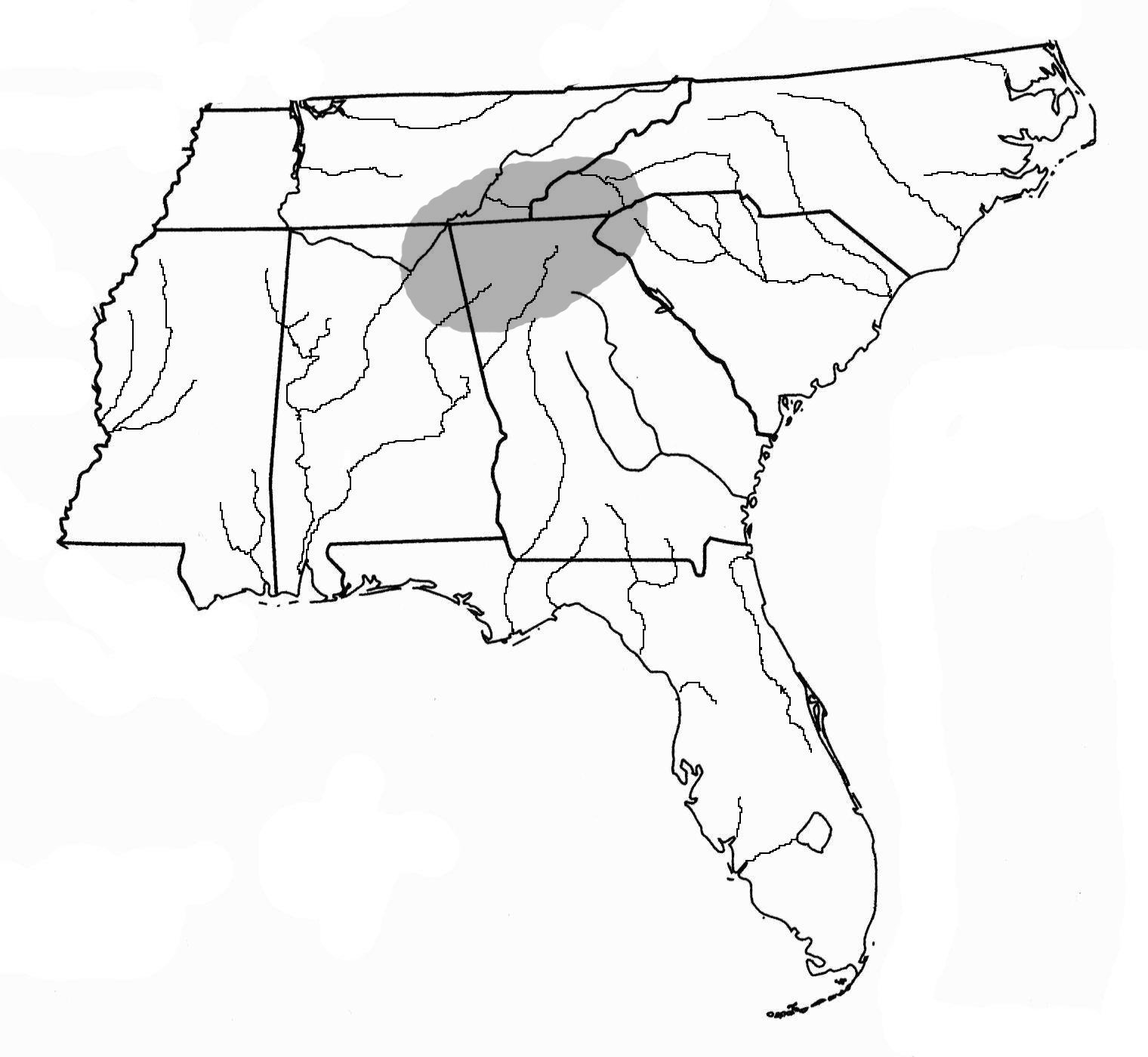
RESEARCH: Tomas M.N. Lewis and Madeline Kneberg named the Dallas pottery types in 1946. Lewis and Kneberg did their research on Hiwassee Island, Tennessee. This type was named for the old town of Dallas, Tennessee, now at the bottom of Chickamauga Lake.
TEMPER: Fine to medium particles of crushed shell was used as temper in this type. Paste color ranges from light to dark gray, light and dark brown, and brick red.
SURFACE DECORATION: The surface of the vessel is void of any decoration.
VESSEL FORMS: Known vessel forms include shallow open bowls and small globular jars, some of which have strap handles or suspension holes.
CHRONOLOGY: Dallas pottery belongs to the Late Mississippi period associated with Dallas and Mouse Creek phases in Tennessee and the Barnett phase in northwestern Georgia.
GEOGRAPHIC DISTRIBUTION: Dallas pottery is found in eastern Tennessee, northwestern Georgia, western South Carolina and northeastern Alabama.

Bruce Butts collection
RESEARCH: Carey B. Oakley and Boyce N. Driskell recovered examples of this type at sites on the Redstone Arsenal, reporting on their work in 1987.
TEMPER: This type name is applied to all limestone-tempered plain pottery.
SURFACE DECORATION: Two surface treatments have been noted. The roughened surface (left &, bottom examples) is associated with the Late Woodland period and is often categorized as Flint River Brushed. The more smooth surfaced type (two right examples) has lumps of limestone clearly on the surface, but is more smoothed than the later roughened type, belongs to the Early and Middle Woodland period.
VESSEL FORMS: Vessels appear to be straight sided medium to large jars with simple rims or with constricted, but straight rims. The vessel bottoms appear rounded to semi-conical and often has podal supports, especially on the plain, smoother Early to Middle Woodland examples. (See Hamilton Plain vessel forms.)
CHRONOLOGY: The smoother examples with podal supports belong to the Early and Middle Woodland periods. The roughened, Flint River brushed type belongs to the Late Woodland period.
GEOGRAPHIC DISTRIBUTION: Wimberly states that this type is found in Louisiana, Mississippi and north-central to northwestern Alabama and Clarke and Mobile counties, Alabama.
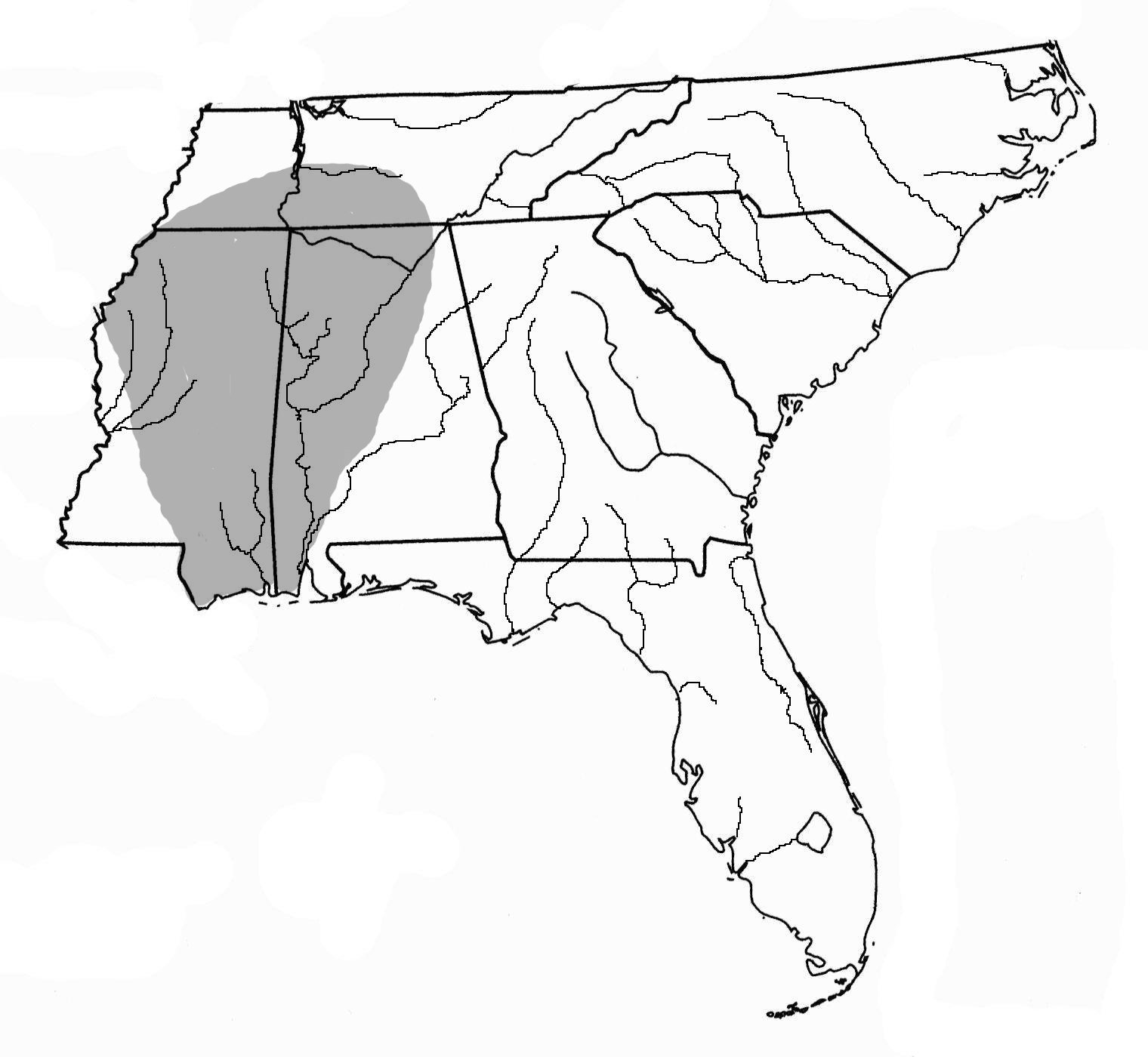
RESEARCH: This type was first defined by Jesse Jennings in 1941.
TEMPER: This is a coiled pottery type that is tempered with a mixture of fossil shell particles, sand and medium to coarse clay particles. The texture is homogeneous with evenly mixed temper. Surface colors range from buff to reddish brown, gray or black with a gray core. Surfaces are carefully smoothed.
SURFACE DECORATION: There is usually no decoration on this type beyond a rare notching of the rim done with a rounded implement such as a stick. A few sherds have also had some crude incising along the neck of the vessel.
VESSEL FORM: Vessels are usually wide-mouthed and globular jars with a constricted neck. Bowls are also known. Rims are vertical to out-flaring and may be thickened. Lips may be rounded or flattened, which produced a ragged edge along the outer edge. Bases are most commonly rounded, but may also be flattened. Appendages consist of beaded an appliqué band below the rim or flat, flange handles at or below the rim, both of which are common.
CHRONOLOGY: Oktibbeha Plain pottery belongs to the historic period. The pictured vessel was recovered with other features in association with glass beads and is believed to be Historic as well and may be Chickasaw related.
GEOGRAPHIC DISTRIBUTION: Jennings did not identify any specific sites for this type, but it is known across northern Mississippi, perhaps following the Chickasaw distribution in that area.

RESEARCH: Bettye J. Boyles reproduced the notes of William Haag who defined the type in 1939. Hollingsworth found this type at the Sheeps Bluff Shelter site in Franklin County, Alabama and Charles Faulkner noted its presence in the Tennessee Valley sites of eastern Tennessee.
TEMPER: This is a white sand-tempered pottery type. The exterior is usually fired to mouse-gray.
SURFACE DECORATION: The surface is plain, but it is often polished or burnished with hemispherical bosses or rounded nodes between 4 and 7mm in diameter. These nodes either touch or are less than 2mm apart and appear 5 to 12mm below the lip. These are pushed through from the inner surface around the sides of the rim, then holes are filled and smoothed on the inner surface.
VESSEL FORMS: Vessels appear to be jars with widely flaring rims. Bases are flat with podal supports. No complete vessels have been recovered. Rims are simple or set off with bosses. Lips are usually rounded, but do occur beveled with notches on the inside of the bevel, or with short (7mm) transverse lines across the outside of the lip.
CHRONOLOGY: This seems to be related to the Early Woodland period as it follows fiber tempered wares in known sites. The vessel form for this type is very similar to one of the forms suggested by John Walthall (1980 p.101) for Alexander Incised pottery. Their similarity of tempering material, age and range in distribution in northern Alabama may suggest a relationship between the two types.
GEOGRAPHIC DISTRIBUTION: This type has been found in the upper Tombigbee River valley and the Pickwick, Wheeler, and Wilson Basins of northern Alabama and the Tennessee River Valley in Tennessee.
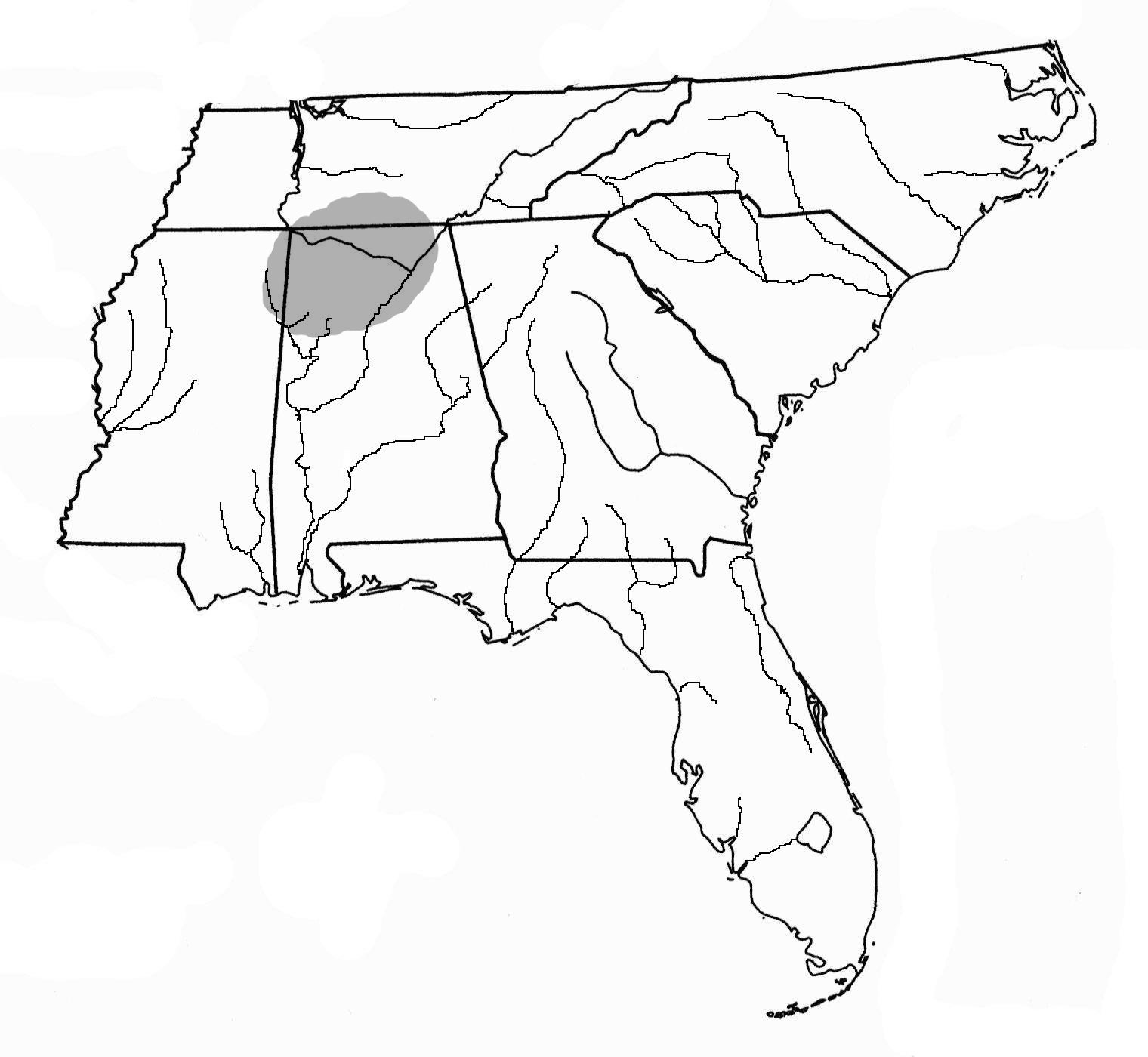
RESEARCH: Bennie C. Keel named and defined this type in 1976. Keel’s research of this type was conducted in Cherokee related sites in North and South Carolina, eastern Tennessee and northwestern Georgia. The type was probably named after the Pigeon River that runs from eastern into western North Carolina in the vicinity of Keel’s research.
TEMPER: Medium to coarse crushed quartz was used as temper in this type. Exterior sherd colors range from light brown, light to dark gray, to red to orange. The lighter colors are more common.
SURFACE DECORATION: This type has very smooth interior and exterior surfaces with an iridescent sheen except on weathered sherds. The sheen is again caused by smoothing the dry surface of the vessel with a steatite pebble before firing.
VESSEL FORM: Pigeon vessels are known to include simple open bowls, straight-sided conoidal jars, jars with slightly restricted necks, and flat based jars with large podal supports. Rims are straight to slightly flaring with lips that are rounded or paddle-flattened and slightly everted. Basal supports were conical or wedged when present.
CHRONOLOGY: Dates relating to the Pigeon period reported by Keel ranged between AD 200 and 400, indicating that this is a Middle Woodland pottery type.
GEOGRAPHIC DISTRIBUTION: Selected sites for dating this type indicate its distribution from eastern Tennessee, western North Carolina, extreme western South Carolina, and northwestern Georgia.
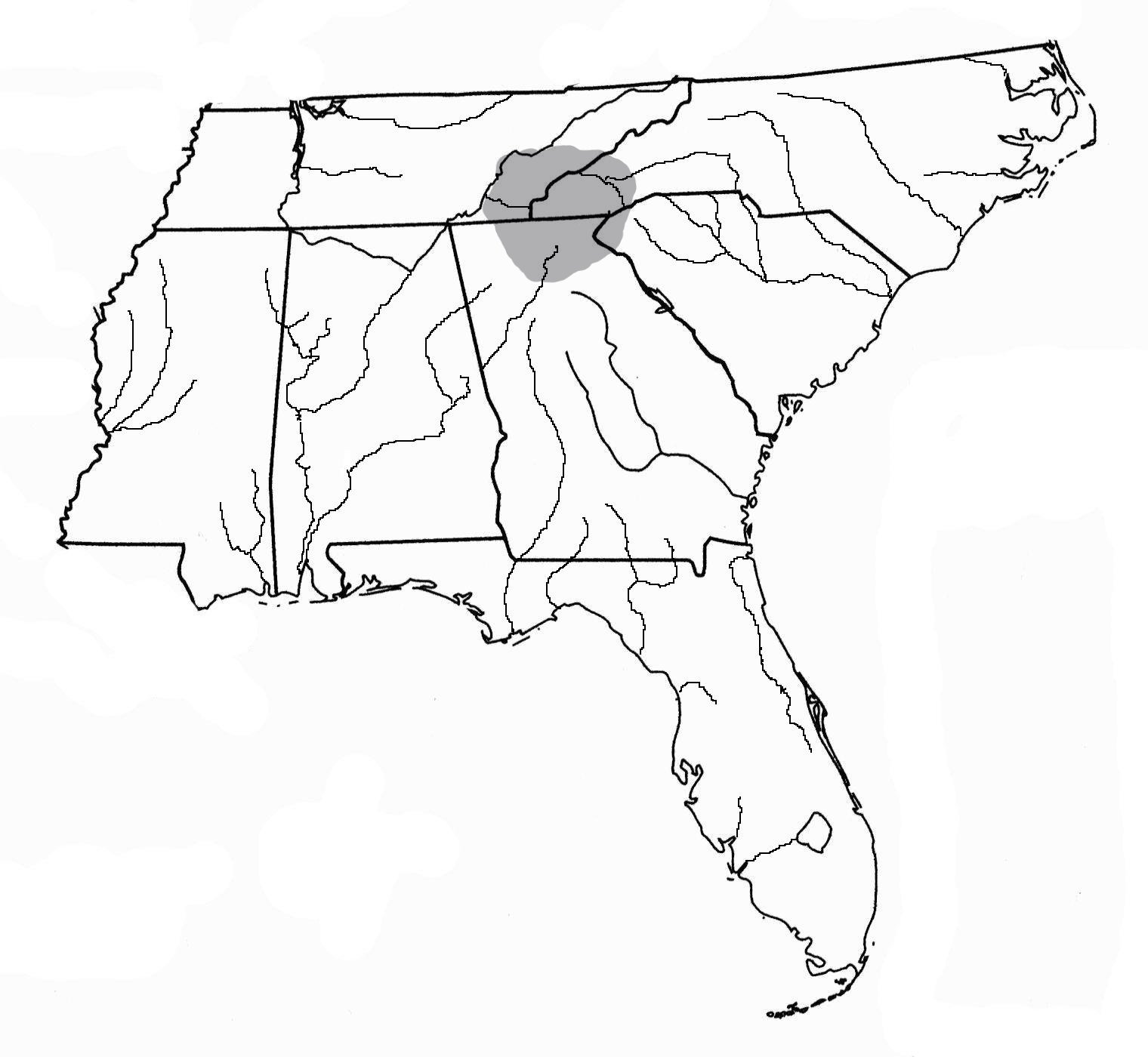
RESEARCH: Originally named the “Early” series by Patricia Holden, this was renamed as the Swannanoa series by Keel in 1976 based on his work in Cherokee related sites in North and South Carolina. The type is named after the Swannanoa River.
TEMPER: This type is tempered with large pieces of crushed quartz (56%) or with coarse sand. The tempering material in either case accounts for nearly half of the paste material. The exterior color of the fired paste is red to reddish-brown or light brown.
SURFACE DECORATION: This is a hand-smoothed finish over the entire vessel with no other decoration.
VESSEL FORMS: Known vessel forms include large to medium sized conoidal jars and hemispherical bowls. The rims are vertical or slightly inverted and the lips are rounded or flattened, with a very small percentage notched or cord-marked. The bases are conical, some with a nipple-like protrusion; or are jars and are rounded to slightly flattened on bowls.
CHRONOLOGY: This is the earliest Woodland pottery series in western North Carolina, dating to the Early to Middle Woodland period.
GEOGRAPHIC DISTRIBUTION: This type is found in western North Carolina, western South Carolina and, perhaps, extreme northeastern Georgia.

RESEARCH: This is plain pottery found in a Swift Creek context that was brought to light by Arthur Kelly at the Swift Creek site in 1938. This term takes into consideration both early and late types with rim treatments and vessel forms being the distinction.
TEMPER: This is a sand-tempered pottery.
SURFACE DECORATION: The surface is plain. Context, rim treatment and vessel form are the determining factors.
VESSEL FORMS: The vessel forms would conform to the vessels of the period that are found in the same context.
CHRONOLOGY: Both early and late types belong to the Middle Woodland period.
GEOGRAPHIC DISTRIBUTION: This type would be found in association with Swift Creek Complicated Stamped pottery that would share the same distribution pattern.
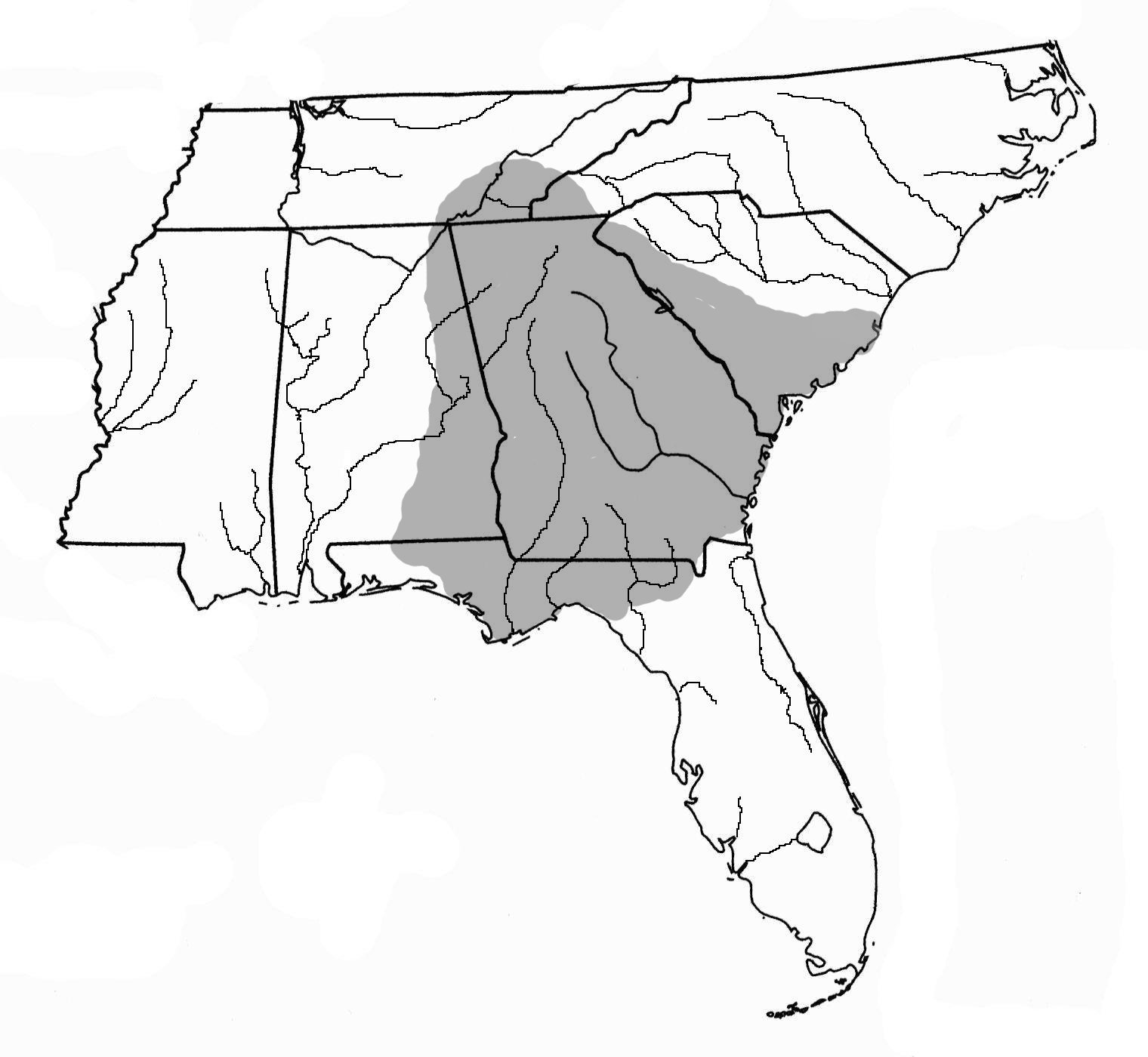
(Left) C.B. Moore 1911 Fig.77, Pecan Point, Arkansas, (Right) Mike Stokes Museum of Southeastern Indians
RESEARCH: Jessie Jennings defined this type in 1941 while investigating sites across northern Mississippi.
TEMPER: This was a coiled pottery type that was tempered with fine sand and lumps of clay and perhaps flakes of charcoal. The texture is firm and compact, but the surface may show some lamination or layering similar to that of shell tempered pottery. Surface colors range from red-brown to brown or black while the core color is gray. Surfaces are smoothed to nearly burnished.
SURFACE DECORATION: There is generally no decoration on this type. In a few cases there are impressions along the lip that seem to have been made with a stick. Some vessels may also display crude incising along the neck. These appear as shallow, vertical lines that run from the neck to the base of the rim.
VESSEL FORM: Vessel forms include hemispherical and shallow bowls, jars with constricted openings, and large mouth globular jars. Rims are usually straight and direct with simple rims. Rims may also be serged or twisted, or can be everted and lips are flattened or rounded. Appendages appear as strap handles, small horizontal lugs at or below the lip, small and tapered non-perforated handles, and appliqué fillets positioned below the rim in combination with incising or punctation.
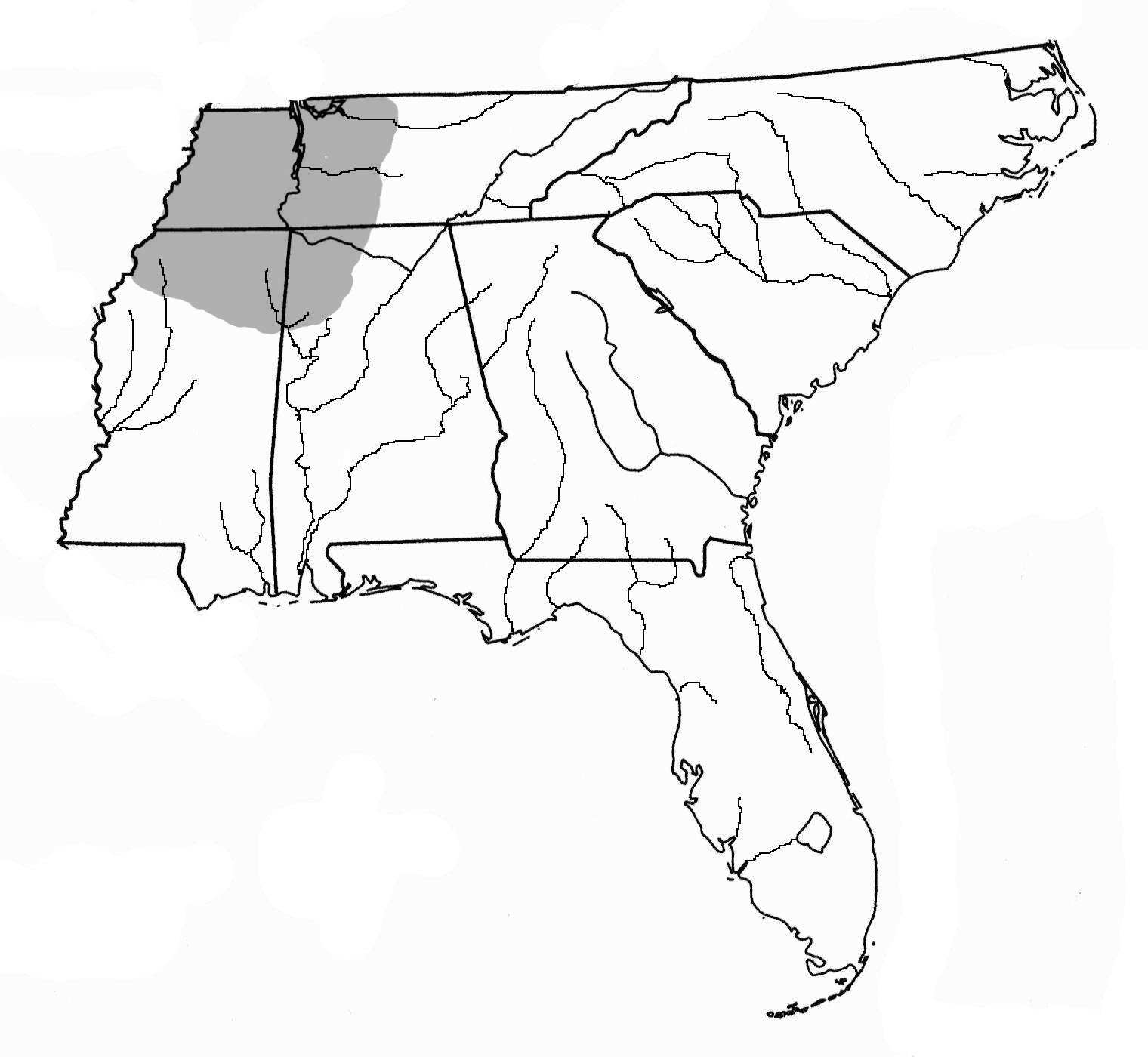
RESEARCH: This type was first defined by Haag in 1939
TEMPER: This type was tempered with plant fiber added to the clay, leaving creases over the vessel surface. Later forms of Wheeler pottery included limestone, with or without the presence of fiber.
SURFACE DECORATION: The surface is described as plain, but it is covered with creases where fiber was included as temper, but was burned out during the firing process.
VESSEL FORMS: Louis D. Tesar (1980)[i] suggested that these vessels might have been fashioned after the steatite vessels that preceded them. The Sheeps Bluff site held sherds with straight rims and rounded lips.
CHRONOLOGY: Hollingworth called this type the marker for the Middle Gulf Formational state in northern Alabama dating between 1200 and 500 B.C.
GEOGRAPHIC DISTRIBUTION: Tesar’s estimation of Wheeler distribution include western and northwestern Georgia all of Alabama except southwestern Alabama, eastern Tennessee and western South Carolina.
Tesar, Louis D., The Leon County Bicentennial Survey Report: An Archaeological Survey of Selected Portions of Leon County, Florida
RESEARCH: William Sears named this type in 1958
TEMPER: This is grit-tempered pottery with very thick walls.
SURFACE DECORATION: The decoration of this type is plain, but the distinction is that the walls of the vessels are very thick. The exterior of the pottery is rough and poorly smoothed.
VESSEL FORMS: The only known vessel form is an elongated jar shape. The vessel rims are moderately flared. The lips are rounded or squared.
CHRONOLOGY: This type belongs to the Middle Mississippian, Wilbanks period.
GEOGRAPHIC DISTRIBUTION: This type is found in northwestern Georgia along the Etowah River valley and may appear in extreme northeastern Alabama, southeastern Tennessee, or western North and South Carolina.
Bruce Butts collection (Left) Jackson County Alabama, (Right) Northwest Georgia
RESEARCH: Jessie D. Jennings defined this type in 1941. His definition of the type was reprinted in the Handbook of Mississippi Pottery Types, SEAC Bulletin No.7 in 1968.
TEMPER: This is a coiled pottery tempered primarily with coarse fossil shell along with some sand and burned clay pellets. The texture is coarse and granular and the paste appears whirled and contorted. Surface colors are primarily reddish, but are also shades of tan, brown and gray. The exterior is often smoothed and the interior is often rougher than the exterior surface.
SURFACE DECORATION: There is usually no decoration, but some crude, broad incised lines may occur.
VESSEL FORM: Vessel forms include wide-mouthed globular vessels with slightly constricted necks and simple bowls. Rims are typically straight or slightly flared and the lips are rounded or slightly flattened. Bases are usually rounded, but flat bases do occur. Appendages include strap handles, small horizontal lugs at the lip, and appliqué fillets along the rim. Lugs often have vertical incised lines or punctations on them.
CHRONOLOGY: This is a Historic period pottery that seems to follow the Chickasaw and Cherokee settlement patterns.
GEOGRAPHIC DISTRIBUTION: Wilson Plain pottery is known from northern Mississippi and southern Tennessee across Alabama and along the Tennessee River valley into northern Georgia.more detailed information on these and other pottery types within the Southeastern United States, please see our “Publications” page to order Lloyd Schroder’s Field Guide to Southeastern Indian Pottery.
